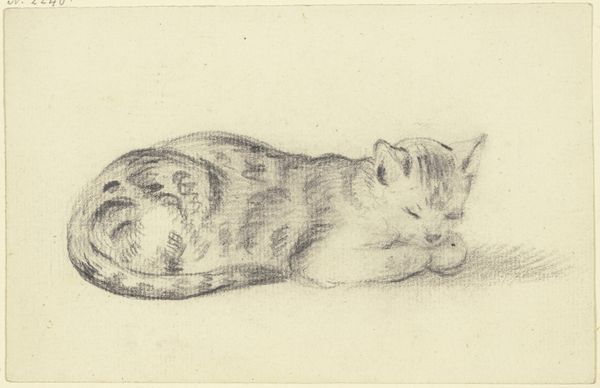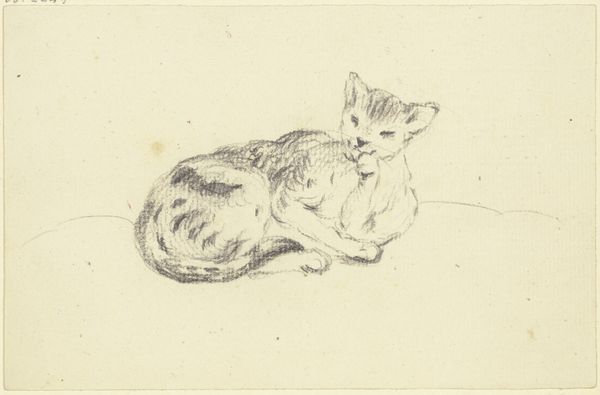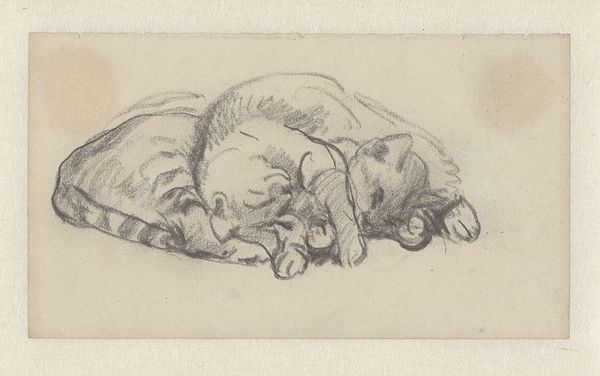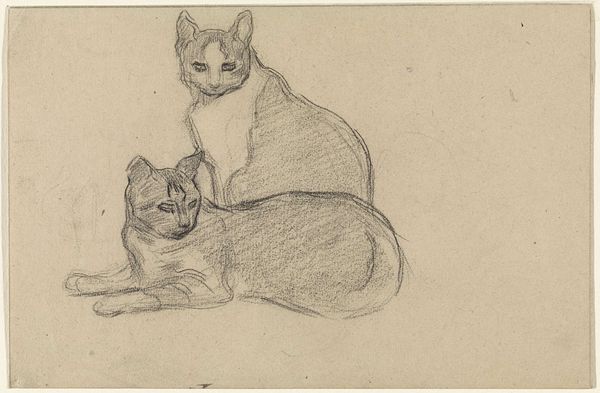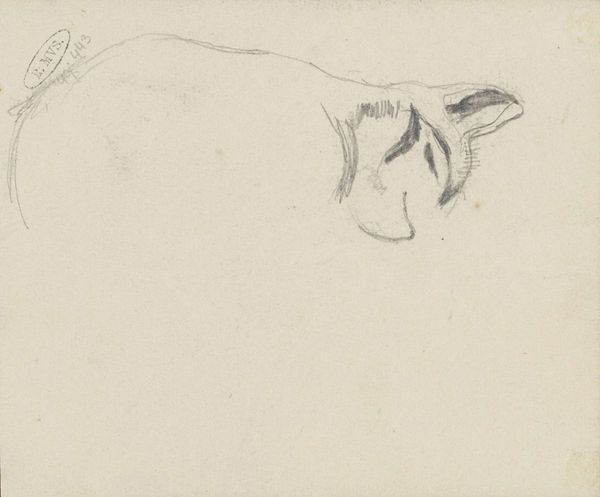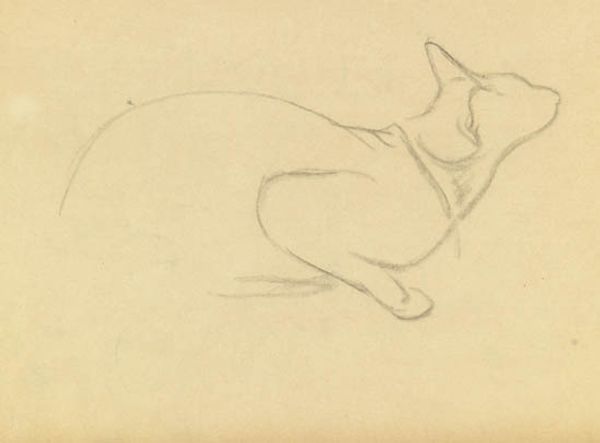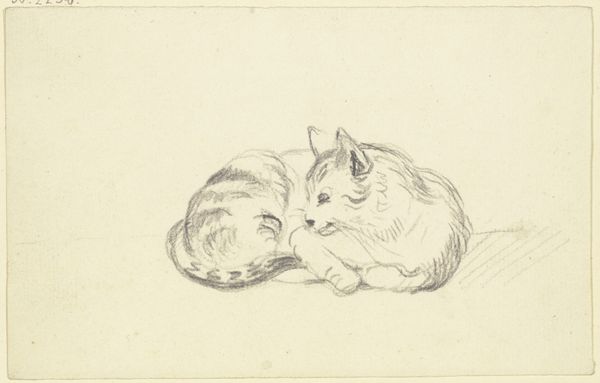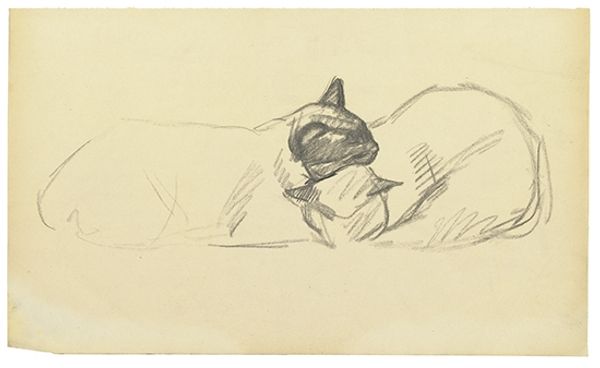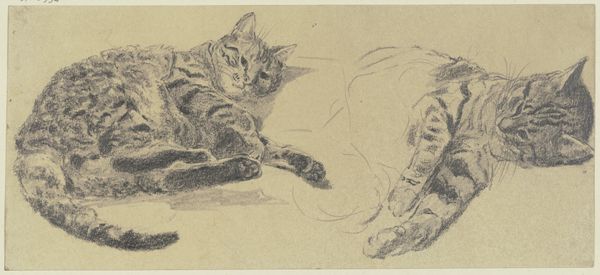
drawing, pencil
#
portrait
#
drawing
#
animal
#
pencil sketch
#
landscape
#
pencil
#
realism
Copyright: Rijks Museum: Open Domain
Curator: Right, let’s turn our attention to George Hendrik Breitner’s, Liggende kat, or Reclining Cat as we'd say in English. He sketched this using pencil, sometime between 1886 and 1891. Editor: Immediately, it’s the simplicity that grabs me. Those quick, almost frantic pencil strokes. It really captures the fleeting nature of… cat-ness. You know? The potential energy of a creature perpetually on the verge of waking up and disappearing. Curator: Absolutely. Breitner was fascinated by capturing the everyday life of Amsterdam, and that included its feline inhabitants. He wasn't aiming for idealized beauty; instead, he looked for authentic moments. This drawing offers such an unvarnished peek. Think of the Realist movement as a whole, aiming for accurate depiction over romantic ideals. Editor: I get that, but there's a tenderness too. Like, even in its sketchiness, the artist lingers on the curve of the cat's back, the way it's curled in on itself. I’m fond of pencil as a medium. It’s raw, exposed. Curator: Yes, the Realists were always keen on showcasing reality’s underbelly. There’s a deliberate choice not to idealize, instead revealing what many academic artists at the time deemed unworthy of representation. Breitner chose brothels, street scenes, working girls… and cats! Editor: Cats totally democratize art! But I wonder, beyond capturing a moment, what's the statement? Is he poking fun at bourgeois leisure? Or just showing a world through working-class eyes? Curator: The beauty lies in the subtlety of that suggestion. Instead of a grand pronouncement, it offers observation and, perhaps, a touch of affection. These understated details reflect larger trends happening outside of art: growing cities, changing class dynamics... He depicts them intimately through small-scale art meant for smaller audiences outside formal Salon structures. Editor: So less social critique, more social document. He captured, not critiqued. I suppose that makes the drawing that much more intriguing, actually. You’re left to find your own message. Curator: Precisely. It’s about looking closely, acknowledging the quiet, unassuming lives unfolding all around us, both then and now. Editor: Yeah, I like that idea a lot. The cat as a mirror of daily existence, just… existing. What could be more compelling than that, right?
Comments
No comments
Be the first to comment and join the conversation on the ultimate creative platform.
